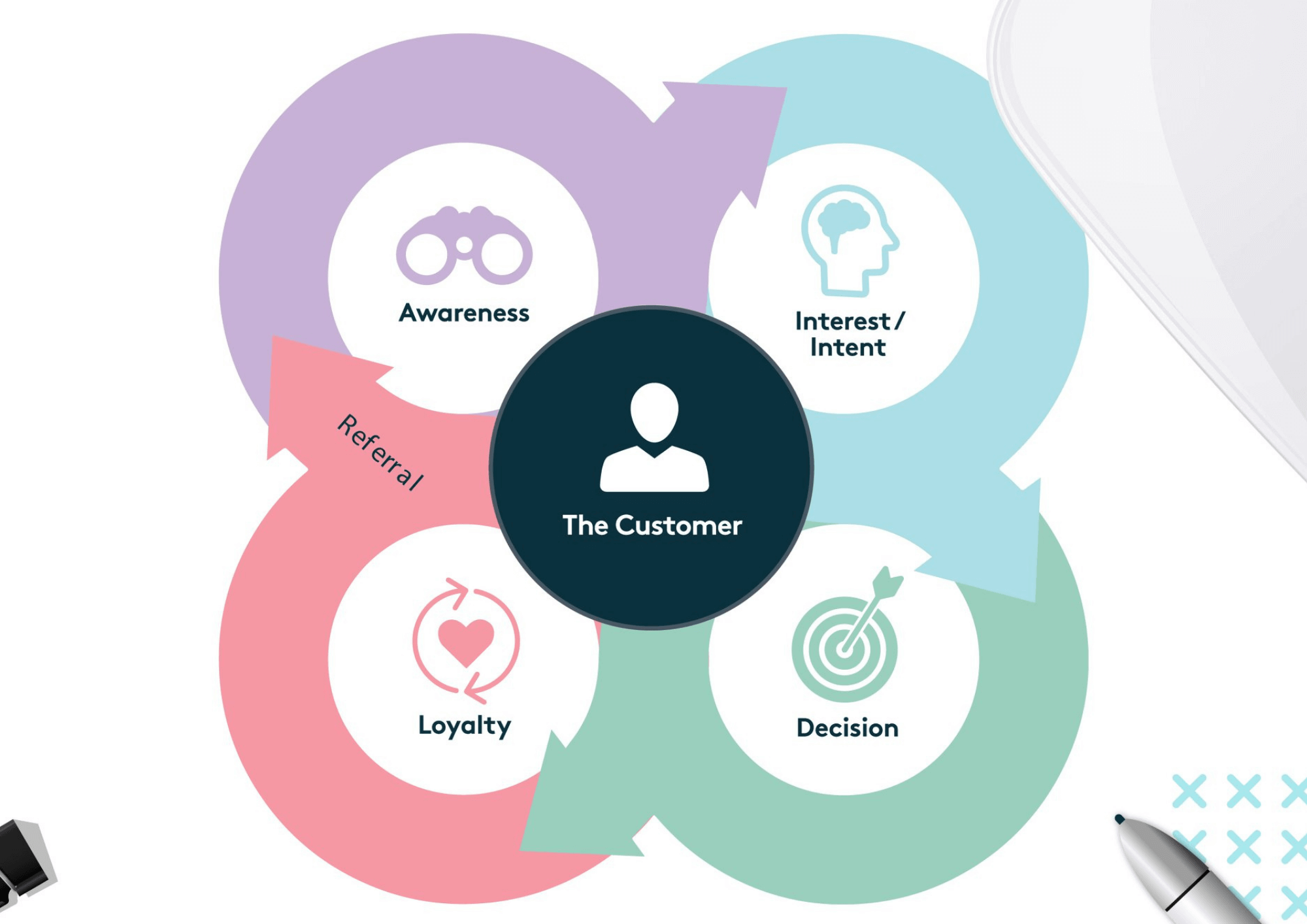Mapping and Measuring the Customer Journey
Gone are the days of the linear customer journey. Technological advancements and evolving trends and customer expectations mean that customers can go through multiple journeys in their buying process, and can move backwards, forwards and jump steps in the customer journey.
These journeys can happen anywhere online and offline; social media, websites and apps on desktop and mobile. As well as in person, at home or on the train.
The fluid nature of the modern customer journey makes it essential for marketers to have a solid understanding of where their prospects and customers are sitting in their journey, and a plan for what communications they are going to receive next.
What is a Customer Journey Map?
This term refers to the visualisation of a consumer’s experience with your brand and the sentiments they are expressing. It will show you how your prospects convert into customers, from the moment they initially interact with your brand through to their decision to purchase, and beyond.
The Customer Lifecycle
Property Republic developed a customer journey map, which we call the Customer Lifecycle. It flows through the following stages:
Awareness
In the Awareness Phase, prospects are searching for information about your brand, services, project or products. Your brand needs to focus on building authority via high-quality content housed on your website, in a variety of formats. Consistency and velocity are key. Think about developing content that builds trust, high quality blogs that build brand awareness and referrals from customers and builders. Share this content via search engine and social media marketing plus other relevant media.
Interest and Intent
During the Interest and Intent Phase, prospects are considering your project or products, and comparing them with others, to see which meet their needs the best.
Work with your sales team to develop a best practice phone follow-up conversation. If you have more than one sales person, assign calls with prospects to the strongest team member. The purpose of the call is to make a time for the prospect to visit your sales centre or participate in a conversation where the sales consultant can gather additional information that will help the marketing team make better decisions. Entertaining and informational videos or Facebook Live streaming are helpful at this stage and are complemented by email marketing using educational content, e-books, testimonials and case studies to ‘convince’. Any email should have obvious calls to action for booking an appointment or sales call, plus links to relevant product. Support this activity with digital ad campaigns through Facebook and Instagram.
Decision
In the Decision Phase, prospects turn into customers – they choose your product. If the previous stages are done correctly, your content has built a great presence, you offer a solid product and service, and your team has answered every question, the prospect should buy. Here’s where other disciplines, apart from marketing and sales, are important. If your buyer has been reading about delays in construction, poor service and promises not kept, you have not played your role and delivered what you promised, which makes it very hard to get a sale over the line. During the decision phase, a product that meets the buyer’s requirements is presented (digitally and in person), they receive an in-depth presentation, all the legal information is explained and accessible and they feel confident in your brand.
Loyalty
Customers only enter the Loyalty Phase if their customer experience (and your product) has exceeded their expectations. Brands need to be focused on great service, delivering a great product, following up and checking on client happiness levels, and repairing any reason for dissatisfaction. You can do this by:
Follow-ups and seasonal check-ins: build relationships without being pushy
Sending gifts and thank you messages
Email marketing: nurture buyers’ loyalty by sending them your new guides, blogs and customer/team stories
Blogging and content
Retargeting ad campaigns with stories (announcements) to reinforce their purchase decision
Asking for referrals
Why You Need a Customer Journey Map
One of the best ways to align your consumer-centric business approach with your team efforts is to create a consumer journey map. This can help you work towards a great customer experience, increasing your revenue in the process.
A customer journey map will allow you to target and personalise your engagements with consumers. You can use their preferred channels and personalise messaging according to their position within their journey, their needs and expectations.

